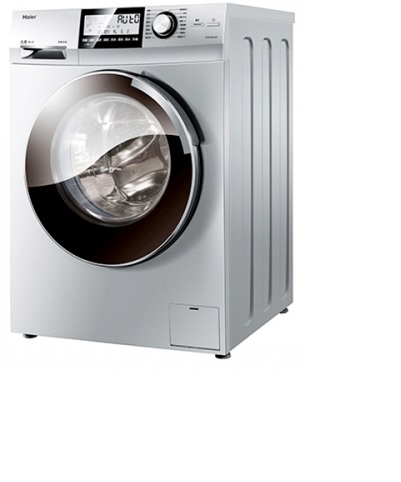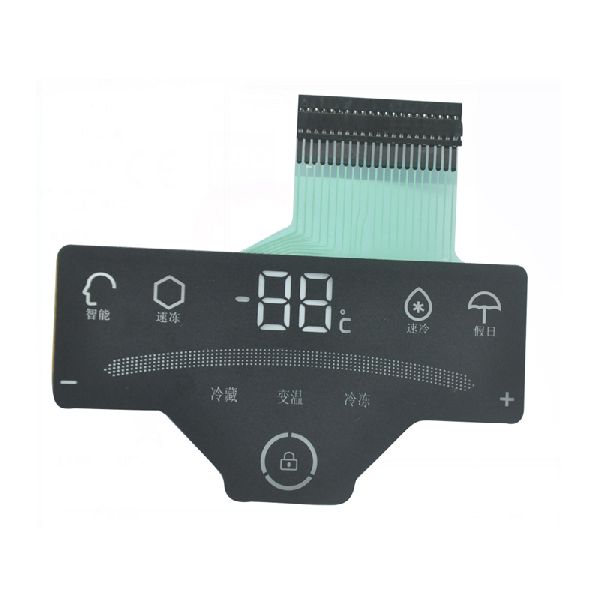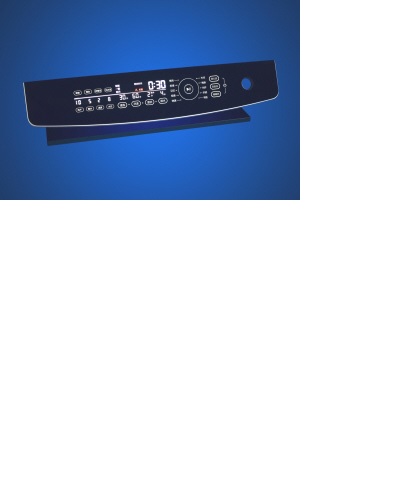Washing Machine Capacitive Switch: Smart Devices are Becoming Smarter
The Need for Washing Machine Capacitive Switch
With the advent of smart technology in several industrial electronic interfaces, even home appliances are getting a breakthrough using intelligent interfaces, such as a washing machine capacitive switch. Capacitive technologies facilitate better choice and economical means to integrate enhanced features to make consumer appliances more functional for today’s tech-centric consumer items.
Conventional mechanical switch systems use standard cylinder-shaped or rectangular tank shapes to produce continuous measurements. Their constant exposure to liquids tends to decrease mechanical precision over time and reduce the interface’s lifespan. Capacitive switch mechanism improvises automatic controls of washing machine interfaces.

The capacitive switch panel architecture incorporates solid-state circuitry in a full-bodied interface that is highly effective and impervious to dust, liquid, contaminants, and frequent vital presses.
Liquid Level Sensing
Liquid-level sensing is a vital technology in a range of modern consumer appliances like washing machines. The traditional mechanical systems immersed in washing machines are exposed to rust, excess wear, cross-contamination, etc.
Consumers put their faith in appliances and reckon on the quality and reputation of high-end devices. The innovative and cost-efficient capacitive switch ensures clear-cut fluid-level measurements with better precision and lesser set-up costs, using modified end-to-end solutions and easy-to-install regulation software.
The capacitive switch operates through field-sensing engineering, which empowers user interfaces with no moving parts. The technology delivers superior design flexibility and more robust and efficient machine operation than conventional mechanical systems. Since it is in solid-state with no moving parts and does not need dipping in a tank, a capacitive fluid-level switch carries longer product life with more precise measurements.
General View of Washing Machine Capacitive Switch
The switch avoids mechanical connection to the operator, which means the keys are not machine-driven. The activating component is parted from the operative using a flat surface, e.g. glass, plastic or some non-conductive surface.
Consequently, it becomes easier to clean the surface. Besides, the smooth surface guarantees that it is likely to operate the device without force – a light touch is adequate. Visual and acoustic motions can repay for the absence of tactile response.
The whole capacitive operating unit comprises of three elements: capacitive sensors, assessing electronics, and the tangible operator exterior (normally glass or Plexiglas).
Customised Software for Auto Calibration
A capacitive switch typically includes customized implanted software. It serves the purpose of auto-calibration for easy installation, or manual calibration to capitalize on the accuracy.
A conventional printed circuit board used for the capacitive switch lies on a flat surface tank. In contrast, a thin polyester or polyimide flexible circuit accommodates curved tank surfaces or limited space applications.
Designers opt for flexible courses to use unconventionally shaped tanks to enhance available space. A single capacitive switch serves as a point sensor signifying the existence or nonexistence of fluid at a given level in the tank. Otherwise, two sensors used in a cycle at low and high levels can control fluid in a tank by activating a refill, then turning off the flow at the preferred level.
Style and Functionality with Conductive Polymers
Most domestic appliances like washing machines are affected by regular shifts in temperature and humidity, apart from frequent use and rare misuse by consumer homeowners. The use of PCB or polyester substrate depending upon the application presents exclusive design tests, engineering costs, and operational restrictions in capacitive interfaces.
The capacitive touch-based applications in washing machines require conductive polymers to provide high optical clarity, similar resistance, and easy processing, at reduced overall application costs. These materials offer remarkable thermal, electrochemical, and solution-processing properties that are best for washing machine capacitive switch design.
This water-soluble and colourless polymer mixture serves as the dispersal of crystallized particles draped in water. The conductive switch designed by screen printing a film of the dispersion over the substrate's exterior dries out the moisture by heat—the dispersion film coated on a range of moulded or flexible substrates PET and PC.

Excellent Adhesive Qualities
The polymer mixtures possess good adhesion qualities, optical transparency, high chemical stability, and electrical conductivity. Intrinsically derived designs are made with this compound to suit highly challenging optical applications, such as rotary wheel inputs, sliders, and backlit capacitive keys. The technology has usefulness in vigorous self-propelled applications, characteristically behind a plastic bezel.
Economical and Cost-Effective
The power button integrated into the capacitive switch provides additional power savings when the machine is idle; a dead front look hides the signs until the power button is triggered.
The Switch Doesn’t Need Soldering
As a conductive ink for backlit capacitive switches, the polymer mixture allows easy to use, and low-profile interfaces made at a reduced cost. Polymer circuits are translucent, offer excellent elasticity, and do not need soldering to create a flexible circuit's low profile. The adaptability of polymer application also allows decorative conductive constructions for stylish touch panels.
Haptic and Visible Feedback
Touch-based washing machine capacitive switch is often contrived with haptic, acoustic, or visible feedback. This feedback is both a design select and a functional attribute. While a mechanical switch or knob is obviously in the on or off position, the capacitive touch switch is more indefinite. You design it in such a manner that users know that they set the machine to work in a precise manner.
Actuation Process
The switch actuates by measuring a small electrical charge transferred from the human touch indicating the switch to sense user’s input.
Quick Response
The switch responds within seconds and even quicker in washing machines and other microelectromechanical systems devices. UART communication for device reporting and lighting control guarantees constant receptiveness.
Flexibility to Add Backlighting
The capacitive touch switch used in various domestic appliances, such as washing machines typically inherits features like LED backlighting for better visibility of icons.
The options for integrating user-friendly panels and drawings onto polymer-based capacitive switches are practically unbounded for a backlit capacitive touch interface. Such brilliance in flexibility enhances the look of smarter, economical, and better aesthetically tempting designs.
Cosmetic Impact
The capacitive switch of the washing machine outlooks to express the next generation of machines. Therefore, the aesthetics produced on the glass control panel present tactile feedback. The hardened glass panel with second surface printing creates an incandescent touchpad appearance of the switch.
Stability
The washing machine capacitive switch panel design integrates solid-state circuitry in a powerful interface that is exceptionally impervious to several keypresses, water, impurities, and EMI.
Durable and Reliable
Since there is no involvement of mechanical parts in the switch, the capacitive touch switch performs robust and reliable tasks and remains a durable interface for several years.
Mechanical shock resistance is another consideration in the switch’s make. Since the washing machine’s panel lacks joins or openings, the automated behind the glass remains safe from water penetration. As a result, there is no risk of electronic failures.
Resilient to Pressure and Temperature
Manufacturers design the capacitive switch to bear extensive temperature and pressure range and give a precise fluid measurement—the machine functions at its best without any issue.
Easy Sealing
The switch is easy to seal against chemical ingress, moisture, or dirt, making it an excellent option for harsher environments if the washing machine is set to operate in outdoor facilities.

Summary
Washing machine capacitive switch technology is a clear cut advancement to mechanical controls previously incorporated in electronic user interfaces. The washing machine user panels summarize a pool of inventive notions and full-bodied manufacturing for improved functionality with incomparable product consistency, energy, and cost savings.




